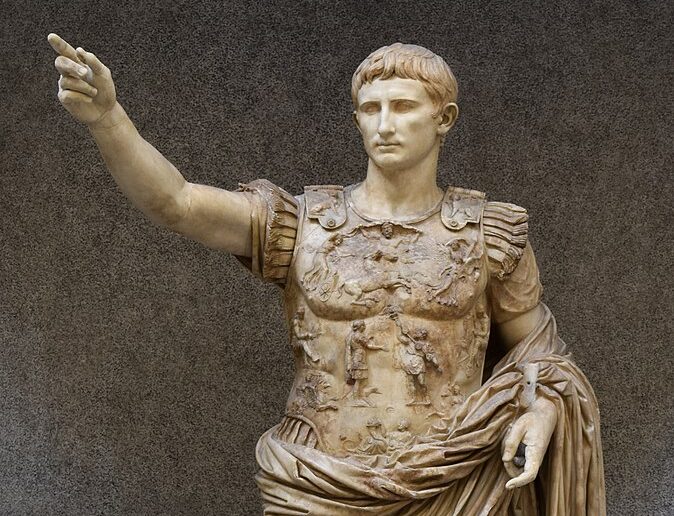The Augustus of Prima Porta (is a full-length portrait statue of Augustus Caesar, the first emperor of the Roman Empire. The statue was discovered on April 20, 1863, during archaeological excavations directed by Giuseppe Gagliardi at the Villa of Livia owned by Augustus’ third and final wife, Livia Drusilla in Prima Porta. Livia had retired to the villa after Augustus’s death in AD 14. The statue was first publicized by the German archeologist G. Henzen and was put into the Bulletino dell’Instituto di Corrispondenza Archaeologica (Rome 1863). Crafted by skilled Greek sculptors, the marble statue is believed to be a copy of a lost original bronze piece displayed in Rome. It blends Greek and Roman elements to craft an official image of Augustus, showcasing his grasp of visual influence. While the head portrays a realistic youthful Augustus, the body diverges from reality; despite its clothed form, it resembles the heroic stance found in Greek statues. The detailed armor, depicting a Parthian returning standards to a Roman, symbolizes peace along the eastern frontier of the Roman Empire. The statue stands 2.08 metres (6 ft 10 in) tall and weighs 1,000 kilograms (2,200 lb).

